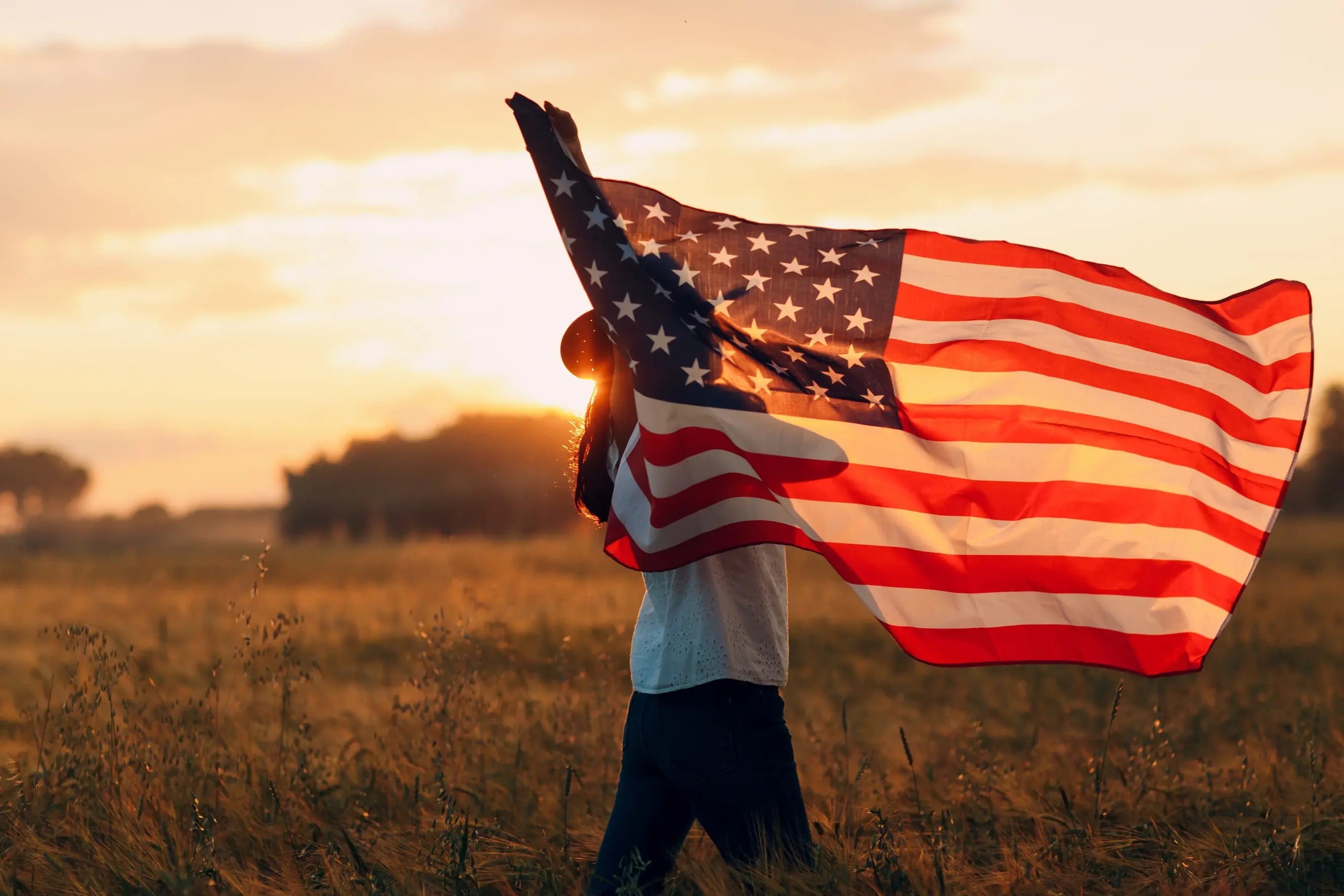Technically, America is 245 years old: the nation first declared her independence from Great Britain on July 4th, 1776. Long before Independence Day, settlers from Europe had begun the westward expansion, a vast immigration to the Americas in order to find improvements in their lives.
Native Americans lived in the Americas for some 10,000 years before European explorers and settlers arrived. Beginning in the early 1600s, the emigration numbers of Europeans traveling to the United States completely skyrocketed.
Early European Settlements
Jamestown
The first English colony known to dock its boats after their trek across the Atlantic was Jamestown, VA, in 1607. 104 settlers consisting of only men and boys arrived on the shore after voyaging across the Atlantic in three ships: the Susan Constant, the Godspeed, and the Discovery. They decided on naming their colony after the current King of England, James I, on May 13, 1607.
This settlement wasn’t chosen at random; the Virginia Company funders of the expedition chose Jamestown based on a few factors. For one, it was very far inland from the ocean and surrounded by water on three sides of the land (it’s a peninsula), meaning it would add a degree of difficulty for Spanish ships to attack.
There was no known Native American habitation at this specific location which gave them privacy and wouldn’t necessarily lead to fighting if it was not claimed prior. The water next to the land was also very deep — meaning they could anchor their ships very close to shore at their own convenience.
Jamestown established their own colonized government, naming Edward Maria Winfield as the first President along with council members who held positions as well. Their names were Bartholomew Gosnold, Christopher Newport, John Martin, John Radcliffe, George Kendall, and John Smith.
By June 15th of that same year, the colonists finished constructing the fort in hopes of keeping themselves protected from nearby Powhatan people. They had officially established the first European settlement in the New World.
New England
Some 10-15 years after the settlers first landed at Jamestown, The Mayflower famously docked at Plymouth, MA, and began the works of creating New England (as we know it today). In September of 1620, 100 English men and women departed from their mother country to eventually dock their historic ship at Plymouth Rock in December of the same year, some two months later.
Due to religious concerns in England, many of the settlers were members of the Separatist Church. They decided to leave after the Church of England failed to complete the necessary work associated with the Protestant Reformation.
This issue had been ongoing with the English Separatists for some time — they had previously colonized the Netherlands during 1607 and 1608 in order to seek religious freedoms. After a decade or so, they ventured to the New World with hopes to be able to incorporate their English-spoken language.
Similar to the Jamestown settlement, the Mayflower colonists signed a contract with the Virginia Company to dock their boat along the Hudson River. Due to strong winds and storms, the ship veered off its original path and ended up reaching lands north of their original destination. They anchored at the site of Provincetown, MA, on November 21, 1920, and sent an exploratory party ashore. Finally, on December 18, they permanently docked at Plymouth Rock.
The Plymouth settlers did a phenomenal job of befriending the local Native Americans, the Pokanokets tribe, who were located in Rhode Island and Massachusetts at the time. In the late fall of the following year (1621), the Pilgrims famously celebrated the first Thanksgiving by sharing a feast with the Pokanokets.
Pennsylvania
In 1681, King James II of England owed money to the family of William Penn, a wealthy Englishmen Quaker. In order to pay off the debt, the King granted a charter for a place for the Quakers to settle. They were given the land area 12 miles north of Newcastle next to the Delaware River. They called their new home “The Province of Pennsylvania.”
Despite the charter grant having more limitations on them than the other colonies, Penn wasn’t concerned about the potential success of his new colony. He believed that Quakers were inherently good people (and better than the Puritans), so his philosophy essentially banked on the trust he had in them to form a solid government. It worked as they settled in 1681 on the east side of the Chesapeake River. To their benefit, the land they reached was extremely fertile, and they founded the city of Philadelphia.
Like the Plymouth colony, Penn was able to form friendly relationships with the neighboring Native American tribes by purchasing land from them before extending their settlement. Although the majority of the Pennsylvania settlers were Quakers at first, Penn’s ideology of tolerance to religious freedom attracted the likes of many others looking to escape religious oppression in Europe.
Diversification Over Time
As of the year 1733, more than 13 established colonies had been founded in the New World along the Atlantic Coast. Settlers were commonly leaving their homelands with hopes of obtaining freedom they didn’t have before.
Many European companies imposed political oppression on their people, and America symbolized a place where people could do whatever they wanted to with their lives and have a fresh start. These ideals still hold true today, as the United States prides herself on the freedoms that her people have.
The majority of the original settlers were English, but other European nations also had citizens emigrating to the New World as well. This included people from Portugal, France, Holland, Italy, Sweden, Spain, and Germany. Today, the United States boasts one of the most diverse populations on the planet, and a large reason for this is due to the variation of early settlers who came here in the first place.
Pretty soon after settlements began establishing their trade roots, it became clear that the Northern and Middle colonies possessed different aspects of trade than the South.
The North had longer winters which really prevented the ease of farming for livelihood. On the other hand, the South heavily relied on farms and plantations. They used slave labor to maintain these extremely vast pieces of land. Up north, the sea became an excellent source of wealth for the economy. The colonists used the water power to make sawmills, and all those located around the harbors found some way to participate in a trade one way or another.
Fight for Independence
As most Americans know, the 13 English colonies officially attempted to break away from the United Kingdom when they signed the Declaration of Independence on July 4th, 1776. This document proclaimed them a sovereign nation from Great Britain. This act was signed in Philadelphia by American rebels opposed to the crown.
This act sparked the American Revolution, the famous war between the United States Colonies and their ruler to determine the freedom of the settlers. As we all know, the Patriots prevailed over the Redcoats, and in 1787, they established the United States Constitution, outlining the many freedoms and democracy that their citizens now had. Thus, the United States of America was officially born.
During the War of 1812, some 25 years later, the British and Americans were in conflict once again. It was during a famous British bombardment towards Fort McHenry that “Star-Spangled Banner” author/musician Francis Scott Key viewed a still-raised American flag that had withstood the raid. This moment symbolized the future outcome of that particular war and the history of the United States’s resilience over time.
Birth of a Nation
Although there is a simple answer to when the United States officially left the British rule that they no longer wanted to belong to (1776), the history of how the country came to be had ties way beyond that.
The first English settlement was Jamestown in 1607, followed shortly after by the Pilgrims on Plymouth Rock at the end of 1620. Subsequently, William Penn founded Philadelphia and the colony of Pennsylvania towards the latter half of the 17th century, while other colonies had been established all throughout the Atlantic Coast.
The mentality of those Europeans leaving for America played a large part in forming the identity the country recognizes today. Many of them were disgruntled with some form of government oppression or failure to express religious freedoms, all of which were possible in the Land of Opportunity.
The United States embodies this same philosophy today. No matter what you look like, what religion you practice, or who your parents are, America gives everyone the opportunity to succeed. It will remain the Land of the Free for all eternity, and that’s why people want to immigrate here today.
Sources:
History of the United States > Colonial Period | U.S. Embassy
Pennsylvania Colony | History Central
A Short History on Jamestown | National Park Service
Francis Scott Key pens “The Star Spangled Banner” | History.com







